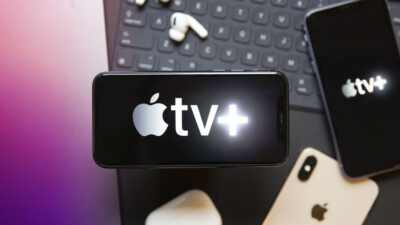Bonded cellular may be revolutionizing electronic news gathering, but vendors of the technology acknowledge that it is a work in progress and at this year’s NAB Show they will feature developments aimed at improving reliability, workflow and control.
The vendors are incorporating satellite capability, improving the interface between the cellular packs and cameras and enhancing control of the packs from the field or the station.
Bonded cellular ENG technology, which uses commercial cell networks, is hot. A February survey by TVNewsCheck of chief engineers at Big Four affiliates found that half were shopping for bonded cellular this year and that nine out of 10 thought it was “important” or “extremely important.”
The big advantages of bonded cellular over satellite and microwave links are mobility and time. With cellular, broadcasters can be live from the field within minutes. But reliability — the ability to deliver clear, steady, live video when it’s needed — is still a problem.
“Reliability is only going to get better, in terms of the cellular infrastructure,” says Bogdan Frusina, chief technical officer for Dejero. “But still, if you’re in a extremely crowded environment, like the presidential inauguration with a million people there, you’re not going to get a strong cellular connection.”
One solution is to integrate cellular with satellite links.
Paul Shen, CEO of TVU, says that’s a no-brainer. “We are capable of aggregating multiple, completely different network interfaces into one device, capturing all of that bandwidth to deliver a very high quality video signal.
“Using a TVU pack and a satellite dish on a truck, broadcasters can arrive on site, immediately start shooting because the 3G and 4G is ready to go. The satellite takes five to 10 minutes to start up, but once the satellite is locked in, the transmission begins to use that additional bandwidth with no disruption.”
Satellite can limit movement, however. To take advantage of the bandwidth from the satellite, users need to plug into the dish via Ethernet.
TVU’s “StatMux” technology takes the different transmissions and bonds them into one, seamless delivery. “It adapts to each network independently and reorders them starting with the strongest signal and puts together the content for decoding,” Shen says. “If one network drops, the user can always depend on another to deliver the same high-quality picture.”
Shen says BBC TV crews in Syria have tapped into satellite networks using the company’s TVU pack after the Syrian government shut down all the cellular networks. “On the borders, they could use Turkish cell networks, but as they got further inside of Syria, they had to rely on satellite.”
TVU isn’t the only company taking a multimedia approach.
“We are becoming more data-connection agnostic,” says Ken Zamkow, LiveU director of sales and marketing. “Whatever you throw at us, we’re going to find a way to transfer it in the best way possible using our backpack or camera-mounted devices, using a Verizon LTE connection, fiber or satellite.”
LiveU has implemented Ka band satellite capability in Europe and is working out kinks in the United States to make it customer-ready. Zamkow says NBC, CBS and Fox used their Ka band technology, aggregated with local cellular networks, in Rome to cover the resignation of Pope Benedict XVI and the election of Pope Francis.
Dejero wrapped up its hybrid-network testing with its partner ViaSat in November 2012. At NAB, the company will unveil the Live+ VSET, a vehicle-mounted version of the company’s Dejero Live+ 20/20 transmitter.
VSET is the name for the adaptive-bit-rate encoder, which has the ability to connect with satellite and microwave trucks and work in conjunction with cellular networks. Frusina says the extra boost from the cellular networks reduces latency on the Ka band.
Another feature some bonded cellular companies will show off at NAB this year are camera interfaces. They allow photographers to check signal strength, bandwidth usage and transmission status through the camera’s viewfinder without taking their eyes off the shot.
TVU claims to be the first cellular uplink solution to team up with the big three ENG manufacturers in the U.S. Its TVUPack Mini now interfaces with Panasonic’s AG-HPX600; Sony’s PMW/PDW XCDCAMs; and JVC’s GY-HM700.
LiveU’s LU40, which has had the ability to interface with Panasonic cameras since February, now also interfaces with Hitachi cameras. Zamkow says the company is in talks with Sony on a similar agreement.
Streambox, a Seattle-based bonded cellular company, also plans to interface its Avenir Mini with Panasonic cameras. “We started talks with Panasonic after CES,” says Alex Telitsine, Streambox chief technology officer. “It makes sense for us, because our unit attaches between the camera and the battery, so it’s not handy to see what’s going on.”
Not everybody is on board with the interfaces. Dejero’s Frusina says they are not needed and clutter the camera’s viewfinder. Teradek VP of Sales Jon Landman says they don’t want to be “tied down to specific camera manufacturers.”
But TVU’s Shen believes it’s an important step to take to accomplish what he believes is the future of bonded cellular: Ditching the camera pack and including a built-in cellular uplink inside the camera.
“I think five years down the road it’s going to be an integral part of the camera,” Shen says. “The interface will all be through your camera and it’ll be easy enough so the photographer can go live and not miss the shot. You’ll turn it on and be live.”
With remote dashboards that can be accessed from anywhere with an Internet connection and other software, bonded cellular companies are giving broadcasters more flexibility over control.
“There are different types of photographers,” says Dejero’s Fursiana. “Some do it all and don’t need much babysitting, while others simply want to focus on the shot — not the technical stuff.”
Dejero’s Live+ Workflow, which the company plans to update come NAB, lets engineers in the studio, or photographers in the field, manage their Dejero units via a browser-based dashboard (photographers can also use the unit itself).
The platform allows an engineer at the studio to monitor the bonded system, check latency and see how much data has been used for the shot. A photographer with a laptop or tablet in the field can do the same thing. The platform also allows photographers to send back non-live content to a station’s server.
Several companies are updating their browser-based dashboards this year for such flexibility and control.
Teradek will unveil Sputnik 2.0 — a free update for existing customers. It’s aim is to let photographers concentrate on the story and have engineers back in the studio worry about the logistics of the transmission.
“A chief engineer can sit in his station and look at the stats on Sputnik, see which networks are performing better, and adjust to get the most bandwidth possible,” says Teradek’s Landman. “The photographer has a simple interface on his camera pack that includes five LED lights. If the lights are orange, it means it’s communicating with Sputnik; if it’s green, it means it’s sending data. If the green lights are blinking quickly, it means there’s a strong connection.”
Sputnik comes installed on a Dell computer provided by Teradek and uses a server from Amazon’s EC2 cloud service, or on a local server, which Landman says most TV stations opt to do.
Zamkow says LiveU’s Dashboard brings more flexibility to TV stations. “If you’re shooting on a Saturday and no one is in the studio, the engineer managing the technology can pull up his iPad or laptop at home and make sure everything is ready to go,” he says. “They have full access to any of the units.”
Andrew Dodson is TVNewsCheck’s technology editor. Follow him on Twitter @AndrewDodson. Contact him with news tips and story ideas at 303-800-4581 or [email protected].

 The makers of the newsgathering technology are beefing up reliability as well as adding satellite capability, improving the interface between the cellular packs and cameras and enhancing control of the packs from the field or the station. It will all be on display at next month’s NAB Show.
The makers of the newsgathering technology are beefing up reliability as well as adding satellite capability, improving the interface between the cellular packs and cameras and enhancing control of the packs from the field or the station. It will all be on display at next month’s NAB Show.


















Leave a Reply
You must be a logged in member to post a comment.
Log In Register Now